מדוע נכתב על אהרון שבגדיו הם לכבוד ולתפארת? החכמה הגדולה לשזור את החסדים עם הגבורות. מהו סוד המחלוקת שיש במניין הפעמונים שיש במעיל? ומהיכן הגיעו אבני החושן, והאם יש היום את אותם אבני חן? חידושים ופנינים לפרשת השבוע – תצווה מהגה"צ רבי אליעזר ברלנד שליט"א
"לכבוד ולתפארת":
כי הכהן הגדול מתלבש בבגדי גדולה ותפארת, "לכבוד ותפארת"; מה זה "לכבוד ולתפארת"? איך אפשר להגיד את זה – "ועשית בגדי קודש לאהרון אחיך לכבוד ולתפארת"!? אלא הבגדים של אהרון זה הלבושים של אדם הראשון!. שהכהן גדול נכנס לקודש הקודשים, היה מקבל כזו שפלות, כזו ענווה, והיה רואה את זיו השכינה, היה רואה את זיו החכמה, היה רואה את ה' פנים בפנים.
לשזור את החסדים עם הגבורות:
ר' מאיר הלוי מאפטא כותב בספר "אור לשמים" פרשת תצווה ששם מדברים על "ועשית בגדי קודש לאהרן אחיך … ויקחו את השש ואת התכלת ואת הארגמן תולעת השני ושש משזר" אז לוקחים "תכלת ארגמן תולעת שני ושש" למעשה תכלת וארגמן תולעת שני – זה חסדים. כי התכלת זה גם צמר, השש זה הגבורות. אבל בציצית התכלת היא הגבורות והלבן זה החסדים, כי אצלנו זה הכל צמר, גם התכלת זה צמר. אבל בגדי אהרן הכהן, בגדי הכהונה – בגדי הכהן הגדול. וזה מחלוקת אם בגדי כהן הדיוט זה היה גם באבנט אז "את התכלת ואת הארגמן ואת תולעת השני ואת השש" אז על כל שלושה חוטים, היה חוט של שש. חוץ מזה היה גם כן בכל ארבע חוטים, חוט אחד של זהב, עירבו חוט אחד של זהב. אז יחד זה היה יוצא 28 חוטים 28 נימים וכל חוט היה שזור מ28 נימים "והם יקחו את התכלת ואת הארגמן ואת תולעת השני ואת השש" כי כל אחד היה עשוי משש. מהמילה "שש" לומדים שלקחו שש נימים של תכלת, ושש נימים של ארגמן, ושש נימים של תולעת שני, כלומר את הצמר צבעו בתולעת שני ושש נימים של שש שזה 24, ולכל 6 הוסיפו עוד נים של זהב, עוד חוט דק של זהב. והם לקחו את הזהב, כי הזהב זה מרמז לגבורות. אז יוצא שבכל 28 חוטים אז יש לנו למעשה נוסף לשש לחוט של זהב כפול 4. זה 7 כפול 4 זה 28. יוצא שהיה לנו 7 חוטים, היה לנו 4 חוטים של זהב, על 24 חוטים שהיו עשויים משש וצמר והזהב, זה כבר תכלית הגבורות אז הכל היה שזור אחד עם השני, [וזו הייתה החכמה לדעת] איך לשזור את החסדים עם הגבורות.
המעיל:
וזה סוד המעיל שאהרון הכהן היה הולך עם שבעים ושתים פעמונים. חד אמר שבעים ושתים – רבי יוסי. ורבי יהודה אומר שלושים ושש. אומרת הגמ' בסוף "המזבח מקדש" בפ"ח עמוד ב' בזבחים; שכמחלוקת לנגעים כך מחלוקת לפעמונים. אותו מחלוקת בדיוק כמה מראות נגעים יש? אז תנא קמא אומר שבעים ושתים, ר' דוסא בן הרכינס אומר שלושים ושש. אותו מחלוקת היא ג"כ בפעמונים –שבעים ושתים ושלושים ושש. כי מעיל בא לכפר על לשון הרע והנגעים, זה בא גם כן על לשה"ר. אז המעיל שזה מכפר על לשון הרע זה בא לתקן את הצרעת. כי כיון שאדם הוא רק חושב על השני הוא כבר מקבל צרעת. [מיד כשיש לו] מחשבה על השני לפני שהוא מדבר, אז הוא מקבל איזה פצע כנגד אותו אבר שאותו אדם שייך. כי כל אדם הוא כלול משישים ריבוא, אז אם הוא חושב על מישהו אז הוא מקבל באותו מקום הוא מקבל פצע. אז אם הוא עושה מיד תשובה, קיבלתי פצע כי אני חושב על איזה יהודי. כי כל אדם מחולק לפי שישים ריבוא נשמות אז מיד מקבל צרעת, איזשהו פצע במקום שהוא חושב על יהודי שני הוא מקבל צרעת. אז ברגע שהכהן הגדול לובש את המעיל אז הוא צריך שבעים ושתים פעמונים. לכן הרבי אומר "חלק ליבא" שיש שבעים ושתים צדיקים בדור, בכל דור יש שבעים ושתים צדיקים. והיצה"ר מסית את האדם להרהר על השבעים ושתים צדיקים, אדם צריך לחשוב שכל אחד הוא מהשבעים ושתים צדיקים, כל יהודי הוא מסתמא מהשבעים ושתים צדיקים, אז לכן יש שבעים ושתים פעמונים, יש שבעים ושתים פעמונים, ויש שבעים ושתים נגעים, ויש שבעים ושתים צדיקים. ואחד אומר שיש שלושים ושש צדיקים ושלושים ושש פעמונים, ושלושים ושש נגעים, כי כנגד כל מחשבה שאדם חושב על מישהו, מזה נהיה לו כואב איזה אבר. בגלל שהוא יש לו איזה הרהור על איזשהו יהודי, והפעמונים באים לכפר. ולכן נדב ואביהו הם לא רצו ללבוש מעיל. אחד אמר יש 15 סיבות למה נדב ואביהו הם נשרפו, אחד מהם שהם לא לבשו מעיל. למה הם לא רצו ללבוש מעיל? כי המעיל יש לזה שבעים ושתים פעמונים, וזה צריך להתקרב לשבעים ושתים צדיקים. הם החזיקו את עצמם שהם צדיקים הכי גדולים, הם לא צריכים להתקרב לשום צדיק, אפילו לא למשה ואהרן, אז הם לא רצו ללבוש מעיל, כי המעיל פירוש שהם נכללים בשבעים ושתים צדיקים. ובאמת התיקון של הבן אדם זה שהוא נכלל בכל יהודי ויהודי!!
אבני החושן:
כתוב בפרשת תצווה: "תרשיש שוהם וישפה" (שמות כח, כ), כשאדם נותן צדקה זה "תרשיש שוהם וישפה". "אדם פטדה וברקת" (שם, יז), זה גם אודם, גם פטדה, גם ברקת, "נופך ספיר ויהלום" (שם, יח), "לשם שבו ואחלמה" (שם, יט). אומר התרגום יונתן (שם לה כז) ב"ויקהל", שהכל בא מגן עדן, אין כאלה אבנים. יש אבני חן אומרים שזה תרשיש, שזה שהם, זה אבני חן שאנשים מנסים לדמיין. אבל באמת האבנים האלה הגיעו ישר מגן עדן, דרך הפישון, ומשה דלה אותם מהפישון, את ה-12 אבנים; "אדם פטדה ברקת, נופך ספיר ויהלום, לשם שבו ואחלמה, תרשיש שהם וישפה".
כל אחד יכול לקבל את הכוח לדחות את כל המחשבות הזרות, רק על ידי לימוד הגמרא, והלימוד הגמרא בעומק, "יצב גבולת עמים למספר בני ישראל" (דברים ל"ב ח'). רק אם הלימוד הוא ספיר ונהיר (לקוטי מוהר"ן ק"א), רק אם הלימוד בעומק אנחנו יכולים להדף את המחשבות הרעות, לימוד בעומק זה רק על ידי קצות החושן! אומר הרב'ה בתורה ק"א מפרש על פי הפסוק "למספר בני ישראל" שצריך שהלימוד יהיה ספיר נהיר, ספירים כמו אבני החושן. "והנשיאים הביאו את אבני השוהם ואת אבני המילואים" (שמות ל"ה כ"ז) אומר התרגום יהונתן שמה שכתוב נשיאים, זה לא מלשון נשיא, אלא זה כמו שכתוב "נשיאים ורוח וגשם אין" (משלי כ"ה י"ד). נשיאים זה לא מלכים או תואר כלשהו של שררה, נשיאים זה עננים. העננים הביאו אבני החשן! מראים לנו אבני חן, הנה זה תרשיש, זה שהם. אבני החשן היו מאירות יותר מהשמש. אבני החשן היו אבנים שהביאו מהקישון, "נחל קדומים נחל קישון" (שופטים ה' כ"א).
מחלקת רבי יהודה ורבי חזקיה (בבא בתרא ע"ה ע"א) מה זה אבני כַּדְכֹד? שוהם או ישפה. בנימין קבל את כל המכות, על כן יש לו באבן את כל הגונים. כמה שמקבלים יותר מכות הגונים מתגלים. בנימין קבל את כל הגונים, כי בנימין קבל את כל המכות שבעולם. כתוב "כַּדְכֹד" מחלקת רבי יהודה ורבי חזקיה ויש אומרים מחלקת מיכאל וגבריאל אחד אמר ישפה אחד אמר שוהם. שוהם זה הכל שחור, יש עוד שיטות אבל השיטה של המדרש רבה (במדבר פרשה ב' פסקה ז') זה שהכל שחור. [בבחינת] שחורה בתכלית השחרות, כי הצדיק נדמה שהוא שחור.
בנימין זה כל הגוונין כי הוא קיבל מכות, כל הגוונין מאירים אצלו! אדם שקבל מכות לאט לאט מאירים בו כל הגוונין, הצרעת מתקלפת. אדם נולד עם צרעת על היהלומים שלו. כל אדם כולו יהלומים, כל אדם נולד עם יהלומים. כל אחד הוא בן מלך שהוא עשוי מיהלומים. אז הוא צריך לקלף את הצרעת, הוא לא יכול לקלף את הצרעת [בעצמו], הוא צריך בזיונות ומכות. כל מכה שהוא מקבל הוא מקלף את הצרעת. האדם נולד עם גוף מצורע "מישכא דחיוויא". "של נעליך מעל רגלך" אם הוא זוכה הוא מקלף את הצרעת, ולכן צריכים שאנשים יבזו אותו יום ולילה, כמה שמבזים יותר את הבן אדם יותר מורידים לו את הצרעת.
השיעור עבר עריכה ואם נפלה טעות אין לתלותה ח"ו במורינו הרב שליט"א אלא בכותב "ואיתנו תלין משוגתנו".
הציור באדיבות הצייר ר' יהושע ויסמן לרכישה: www.yehoshuawiseman.com
 שובו בנים הרב אליעזר ברלנד שליט”א – אתר ברסלב הרשמי הבינלאומי של שובו בנים
שובו בנים הרב אליעזר ברלנד שליט”א – אתר ברסלב הרשמי הבינלאומי של שובו בנים

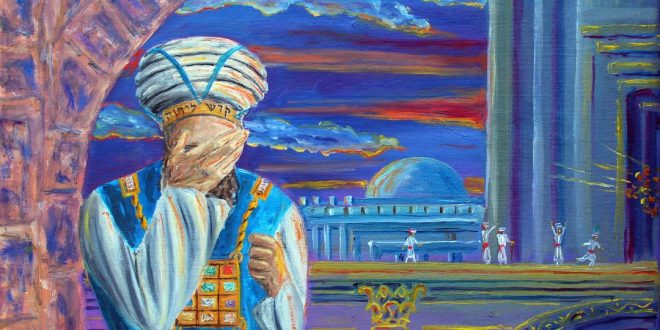
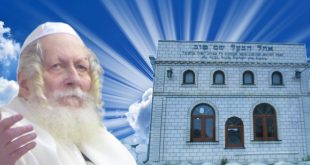
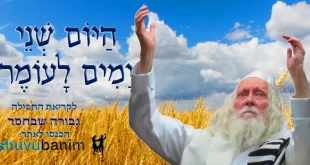
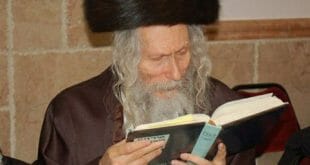

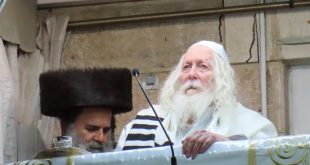
"Why is it written about Aaron that his garments are for honor and glory? The great wisdom is to weave kindness with might. What is the secret of the arrangement of the bells on the robe? And where did the stones of the breastplate come from, and do those precious stones still exist today? Insights and pearls for the weekly Torah portion – commanded by the gaon Rabbi Eliezer Berland, may he live long and prosper.
"For honor and glory":
Because the high priest is adorned in garments of greatness and splendor, "for honor and glory"; what does "for honor and glory" mean? How can one say – "And you shall make holy garments for Aaron your brother for honor and glory"!? Rather, the garments of Aaron are the garments of Adam the first man! When the high priest entered the Holy of Holies, he experienced such humility, such modesty, and he saw the radiance of the divine presence, he saw the radiance of wisdom, he saw the Lord face to face.
To weave kindness with might:
Rabbi Meir Halevi of Apt writes in his book "Or Leshamayim" on the Torah portion Tetzaveh that there it speaks of "And you shall make holy garments for Aaron your brother … and they shall take the blue, purple, and scarlet yarns, and the fine linen." So they take "blue, purple, scarlet yarns, and fine linen" in reality blue and purple, scarlet yarns – these are kindnesses. For blue is also wool, and linen is might. But in the tzitzit, blue represents might and white represents kindness, for us, it is all wool, even blue is wool. But in Aaron the high priest's garments, the priestly garments – the garments of the high priest. And there is a dispute whether in the garments of a regular priest, if there was also a sash, then "the blue, purple, scarlet yarns, and fine linen" then on every three threads, there was a thread of linen. Apart from this, there was also on every four threads, one thread of gold, they intertwined one thin thread of gold. So together, it came out to 28 threads, 28 strands and each thread was woven from 28 strands "and they shall take the blue, purple, scarlet yarns, and fine linen" because each was made of linen. From the word "linen" we learn that they took six strands of blue, and six strands of purple, and six strands of scarlet yarn, meaning the wool was dyed with scarlet, and six strands of linen, which is 24, and for every 6, they added more strands of gold, another thin thread of gold. And they took the gold, for the gold symbolizes might. So it turns out that for every 28 threads, we actually had an additional six for a thread of gold times four. That's 7 times 4 equals 28. So we had 7 threads, we had 4 threads of gold, out of 24 threads that were made of wool and linen and gold, this is already the pinnacle of might, so everything was woven together, [and that was the wisdom to know] how to weave kindness with might.
Sefer Torah HaRav and 100k THs
The Robe:
And this is the secret of the robe that Aaron the priest wore with seventy-two bells. One sage says seventy-two – Rabbi Yossi. And Rabbi Judah says thirty-six. The Talmud states in the end of "Mizbeach Makdish" on page 2b in Zevachim; just as there is a dispute regarding skin afflictions, so too there is a dispute regarding bells. That same dispute, exactly how many different types of skin afflictions are there? So the first sage says seventy-two, Rabbi Dosa ben Harkinas says thirty-six. That same dispute is also regarding the bells – seventy-two and thirty-six. Because the robe comes to atone for evil speech and skin afflictions, it also comes for lashon hara (evil speech). So the robe that atones for evil speech comes to correct leprosy as well. Because when a person only thinks negatively about someone, he already contracts leprosy. [As soon as he has] a thought about someone before he speaks, then he receives some kind of affliction corresponding to that limb that belongs to that person. Because every person is made up of sixty myriads, so if he thinks about someone, he receives in that very place he receives an affliction. So if he immediately does repentance, "I got an affliction because I thought about a Jew." Because every person is divided into sixty myriads of souls, so immediately he contracts leprosy, some kind of affliction in the place where he thinks about a second Jew he contracts leprosy. So the moment the high priest puts on the robe he needs seventy-two bells. Therefore, the Rabbi says "Divide the heart" that there are seventy-two righteous in a generation, in every generation there are seventy-two righteous. And the Evil Inclination entices a person to ponder over the seventy-two righteous, a person needs to think that each one is of the seventy-two righteous, every Jew is essentially of the seventy-two righteous, so therefore there are seventy-two bells, there are seventy-two bells, and there are seventy-two skin afflictions, and there are seventy-two righteous. And one says there are thirty-six righteous and thirty-six bells, and thirty-six skin afflictions, because for every thought a person thinks about someone, from this he gets some limb hurts. Because he has some thought about some Jew, and the bells come to atone. Therefore, Nadav and Avihu did not want to wear the robe. One says there are 15 reasons why Nadav and Avihu were burnt, one of them is that they did not wear the robe. Why didn't they want to wear the robe? Because the robe has seventy-two bells, and this needs to approach the seventy-two righteous. They held themselves that they are the greatest righteous, they don't need to approach any righteous, not even Moses and Aaron, so they didn't want to wear the robe, because the robe means they are included in the seventy-two righteous. And in truth, the rectification of a person is that he is included in every Jew!!
Rav's Sefer Torah and 100k THs
The Stones of the Breastplate:
It is written in the portion of Tetzaveh: "Tarshish, shoham, and yashfeh" (Exodus 28:20), when a person gives charity, this is "tarshish, shoham, and yashfeh." "Adam, pitdah, and bareket" (ibid, 28:17), this is also udem, pitdah, and bareket, "nofech, sapir, and yahalom" (ibid, 28:18), "to proclaim the name and make it heard" (ibid, 28:19). The Targum Yonatan says in Vayakhel that everything comes from the Garden of Eden, there are no such stones. Some say the precious stones are tarshish, which is shoham, these are the precious stones that people try to imagine. But in truth, these stones came directly from the Garden of Eden, through the firmament, and Moses brought them from the firmament, the twelve stones; "adam, pitdah, bareket, nofech, sapir, yahalom, tarshish, shoham, and yashfeh".
Everyone can acquire the power to repel all foreign thoughts, only through the study of the Talmud, and deep Talmud study, "He established the borders of nations according to the number of the children of Israel" (Deuteronomy 32:8). Only if the study is luminous and clear (Likutei Moharan, Part 1), only if the study is in-depth can we push away evil thoughts, in-depth study is only through the corners of the breastplate! Rabbi Nachman of Breslov explains in Likutei Moharan, Part 1 based on the verse "according to the number of the children of Israel" that the study must be luminous, like the stones of the breastplate. "And the princes brought the onyx stones and the stones for setting" (Exodus 35:27) the Targum Yonatan says that when it says "princes," it does not mean princes, but it is like it says "princes and wind and rain are not" (Proverbs 25:14). Princes are not kings or any kind of title of rule, princes are clouds. The clouds brought the stones of the breastplate! They show us precious stones, here is tarshish, this is shoham. The stones of the breastplate shone more than the sun. The stones of the breastplate were stones brought from the firmament, "the ancient mountains, the ancient firmament" (Judges 5:21).
The dispute of Rabbi Yehuda and Rabbi Chizkiyah (in Bava Batra 75a) what are stones of kadkod? Shoham or yashfeh. Benjamin received all the blows, therefore, he has in one stone all the colors. The more accepted blows, the more colors are revealed. Benjamin received all the colors, because Benjamin received all the blows in the world. It is written "kadkod" the dispute of Rabbi Yehuda and Rabbi Chizkiyah and some say the dispute of Michael and Gabriel, one says yashfeh, one says shoham. Shoham is all black, there are other opinions but the Midrash Rabba's opinion (in Numbers Rabbah 2:7) is that everything is black. [In terms of] blackness to the utmost darkness, because the righteous seem black.
Benjamin has all the hues because he received blows, all the hues shine in him! A person who receives blows slowly illuminates all the hues within him, the leprosy peels off. A person is born with leprosy on his diamonds. Every person is all diamonds, every person is born with diamonds. Everyone is a son of a king who is made of diamonds. So he needs to peel off the leprosy, he cannot peel off the leprosy [himself], he needs insults and blows. Every blow he receives peels off the leprosy. A person is born with a leprous body "like snow in purity". "Your sandals were loosed from your feet" if he is worthy he peels off the leprosy, and therefore people need to despise him day and night, the more they despise a person, the more they diminish his leprosy.
The lesson has undergone editing and if there was a mistake it should not be attributed to our teacher, may he live long, but to the writer "And with us hangs our disgrace."
Rav's Sefer Torah and 100K THs